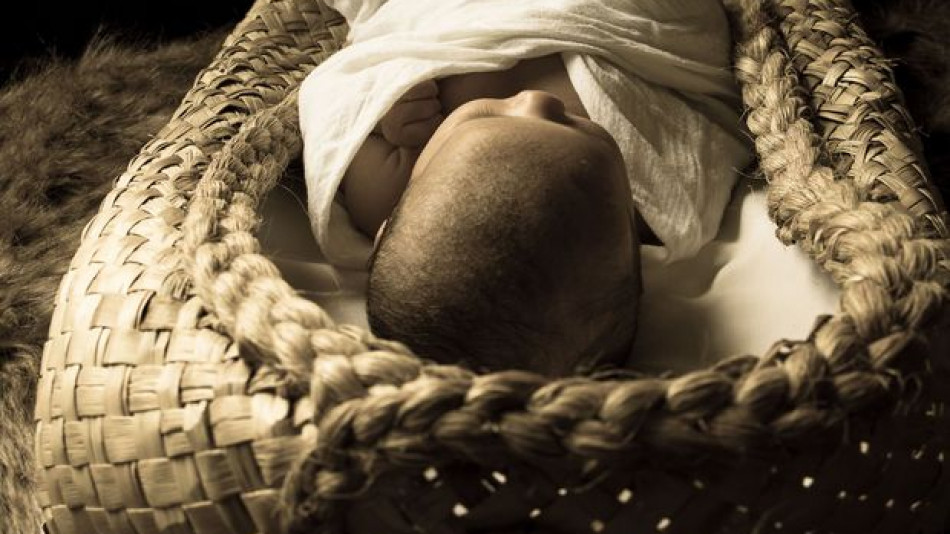Reducing risks for babies - Kia whakaitihia kā tūraru mō kā pēpi
Associate Professor Sally Baddock's research is helping reduce the likelihood of Sudden Unexplained Death in Infancy (SUDI).
Ka āwhina te rakahau a Ahoraki Tuarua Sally Baddock ki te whakaitihia te tūponotaka o te Mate Ohorere Pēpi (MOP).
About 40 to 50 babies die in New Zealand each year from SUDI. Two of the known risk factors include smoking during pregnancy and bed-sharing with the baby, both behaviours that are more common among Māori but hard to change. The wahakura is a basket for the baby woven expertly from flax, that can be put on the parents' bed. It was developed as a culturally acceptable alternative to direct bed-sharing. The wahakura is also an effective vessel around which to pass on a range of ante-natal messages.
Health Research Council funding has enabled Sally Baddock and fellow researchers at the University of Otago to carry out much needed research about SUDI risks and wahakura use. Two hundred Māori families participated in the study, with half being allocated a bassinet and the other half a wahakura. The research concluded that the SUDI risks for babies sleeping in wahakura were no higher than for babies sleeping in bassinets. The wahakura are therefore a suitable alternative to bed-sharing, to reduce the risk of SUDI. The study also found a bonus for the babies sleeping in wahakura: at six months of age they were twice as likely as the babies in bassinets to be fully breastfed.
The research is being widely disseminated to ensure that families and their midwives can have an informed discussion about babies' sleeping arrangements, for example Sally spoke at a Mokopuna Ora Seminar for Te Tai Tokerau (Northland) on 27 April. The research gives people confidence that wahakura are a good alternative to direct bed-sharing.
E 40-50 kā pēpi i mate i Aotearoa ia tau nā te MOP. Ko te kaipaipa i te hapūtaka me te moe kātahi ki te pēpi kā āhuataka tūraru e mōhiotia ana, ā, he mahi māori tēnei mō te iwi Māori, heoi, he uaua ki te panoni. He momo raraka moe te wahakura mō te pēpi kia whakatakoto ai ki ruka i tō kā mātua moeka. I whakawhanake hei kaupapa tika kē ki te moe kātahi. He momo tōtika hoki te wahakura hei tuku iho i kā kōrero i mua i te hapūtaka.
Kua taea a Sally Baddock rātou ko kā kairakahau ki Te Whare Wānaka ki Otago te rakahau mō kā tūraru MOP me kā wahakura e ētahi pūtea o te Health Research Council. E rua rau kā whānau Māori i uru ki te rakahau nei; i hoatu i kā pouraka ki tētahi haurua, i hoatu i kā wahakura ki tētahi haurua. E ai ki te rakahau, kāore i nui ake te tūraru mō kā pēpi e moe ana i kā wahakura i kā pēpi e moe ana i kā pouraka. Nō reira, he momo tōtika ake kā wahakura i te moe kātahi hei whakaitihia te tūraru MOP. He hua anō hoki i puta i te rakahau mō kā pēpi e moe ana i kā wahakura: hei te pakeke ono marama, e rua whakarau te hua mai o te whākote anake o kā pēpi wahakura i kā pēpi e moe ana i kā pouraka.
Ka whakaputa whānuitia te rakahau kia kōrero whaimōhio kā whānau me kā kaiwhakawhānau mō kā whakariteka moe o kā pēpi, hei tauira, ka kauhau a Sally ki tētahi hui Mokopuna Ora mō Te Taitokerau i te 27 o Aperira. Ka whakamanawatia kā whānau e tēnei rakahau, he momo rerekē pai kā wahakura ki te moe kātahi.
May 2017

